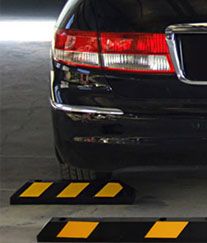Introduction
Welcome to the world of cable management – a crucial aspect in any setting that deals with wires and cables. Whether it’s an office, a commercial building, or an outdoor event, proper cable management is essential for safety, organization, and efficiency.
However, improper cable management can pose serious risks and challenges. Tripping hazards, damaged cables, and disorganized spaces are just a few of the consequences that can arise when cables are not managed effectively. That’s where cable protectors come in. These small but mighty devices play a vital role in ensuring safety and organization in cable management.
In this article, we will dive into the world of cable protectors and explore their purpose, benefits, and usage in different settings. We will also address common concerns and misconceptions about cable protectors, so you can make an informed decision when it comes to choosing the right solution for your cable management needs.
The Role of Cable Protectors in Cable Management
Cable protectors play a crucial role in ensuring safety and organization in cable management. These essential tools are designed to protect cables from damage and reduce trip hazards, making them a must-have in any setting with cable usage.
One of the main purposes of cable protectors is to prevent damage to cables. Whether it is from heavy foot traffic or vehicles, cables are prone to wear and tear. Cable protectors act as a barrier, shielding cables from potential damage and extending their lifespan.
In addition to protection, cable protectors also improve organization. By keeping cables neatly contained, they reduce clutter and make it easier to identify and access specific cables. This is especially important in settings with multiple cables, such as offices, events, and outdoor areas.
There are various types of cable protectors available to suit different needs. These include drop-over protectors, ramp-style protectors, and in-ground protectors. Each type has its own unique features and benefits, making it important to consider factors such as cable type, location, and traffic flow when choosing the right protector.
Overall, cable protectors are a vital part of cable management, providing both protection and organization. By investing in high-quality protectors and following proper installation and maintenance guidelines, you can ensure the safety and efficiency of your cables in any setting.
Choosing the Right Cable Protector
When it comes to cable protectors, choosing the right one is crucial for ensuring the safety and organization of your cables. Here are some key factors to consider when selecting a cable protector:
- Type of Cables: Different types of cables have different needs. For example, heavy-duty cables may require a stronger and more durable cable protector compared to lighter cables.
- Size and Material: Consider the size and material of your cables before choosing a cable protector. A larger cable may require a wider protector, while a high-traffic area may need a stronger material.
- Installation: The type of installation required for a cable protector also plays a role in selection. Some protectors can be simply laid on the ground, while others may need to be secured with bolts or adhesive.
- Cost: While budget is an important factor, investing in a high-quality cable protector can save money in the long run by preventing damage to cables and avoiding potential accidents.
By keeping these factors in mind, you can choose the right cable protector that best suits your specific needs and ensures the safety and organization of your cables.
Installation and Usage of Cable Protectors
Proper installation and usage of cable protectors is crucial in ensuring the safety and organization of cables. The first step is to choose the right type of cable protector for your specific needs. This can include factors such as the type and size of cables, as well as the environment they will be used in.
Once you have selected the appropriate cable protector, it is important to follow the correct installation process. This may vary depending on the type of protector, but generally involves placing the protector over the cables and securing it in place. Properly installed cable protectors will reduce the risk of damage and trip hazards.
Regular maintenance and upkeep of cable protectors is also important in ensuring their effectiveness. This includes checking for any damages or wear and tear, cleaning them regularly, and replacing them when necessary.
In order to ensure a secure and effective installation, it is recommended to seek professional help or follow manufacturer instructions. By properly installing and maintaining cable protectors, you can ensure the safety and organization of your cables in various settings.
Cable Protectors in Different Settings
Cable protectors are essential not only in industrial or construction settings but also in various other environments where cables are present. They play a crucial role in ensuring safety and organization in cable management. In office and commercial settings, cable protectors can prevent tripping hazards and protect cables from damage caused by heavy foot traffic or moving equipment. In outdoor and event settings, cable protectors are crucial for avoiding accidents and keeping cables organized for a smooth flow of activities. For example, at a music festival, cable protectors can protect the stage lighting cables from being damaged by heavy equipment or stepped on by performers. In a busy office, cable protectors can prevent cables from getting tangled, damaged, or causing accidents. With different types of cable protectors available, it is important to choose the right one for the specific setting and purpose.
Addressing Common Concerns and Misconceptions
Cable protectors often face criticism for being unsightly and obstructive. However, this is not always the case. With advancements in design and materials, cable protectors can now blend in seamlessly with their surroundings. They can also be easily covered with flooring or carpet for a more discreet appearance. Additionally, some cable protectors are designed to be low profile and non-intrusive.
Another concern is the cost and difficulty of installing cable protectors. While some may see it as an added expense, the cost of potential damages from unprotected cables far outweighs the cost of cable protectors. Installation is also relatively simple and can be done by following manufacturer instructions or hiring a professional. With proper installation, cable protectors can last for years, making it a worthwhile investment.
Don’t let misconceptions hold you back from prioritizing cable management. Cable protectors are an essential tool for ensuring safety and organization in different settings. By addressing common concerns and clarifying misconceptions, it is clear that cable protectors are a necessary solution for protecting your cables and maintaining a safe and organized environment.
Conclusion
In today’s fast-paced and technology-driven world, cable management is often overlooked despite its importance in various settings. The risks and challenges of improper cable management can lead to accidents, disruptions, and even costly damages. This is where cable protectors come in as a solution to ensure safety and organization.
By protecting cables from damage and reducing trip hazards, cable protectors play a crucial role in cable management. With different types available, it is important to consider factors such as the type of cables and their specific needs when choosing the right cable protector. Additionally, proper installation and maintenance are key in ensuring the effectiveness of cable protectors.
Cable protector outdoor have proven to be beneficial in office, commercial, outdoor, and event settings. Addressing common concerns and misconceptions, it is evident that cable protectors are not only functional but also cost-effective and easy to install.
In conclusion, cable management is a crucial aspect that should not be overlooked. By prioritizing cable management and considering the use of cable protectors, one can ensure safety and organization in various settings. So, don’t wait any longer, invest in cable protectors and experience the benefits for yourself.






